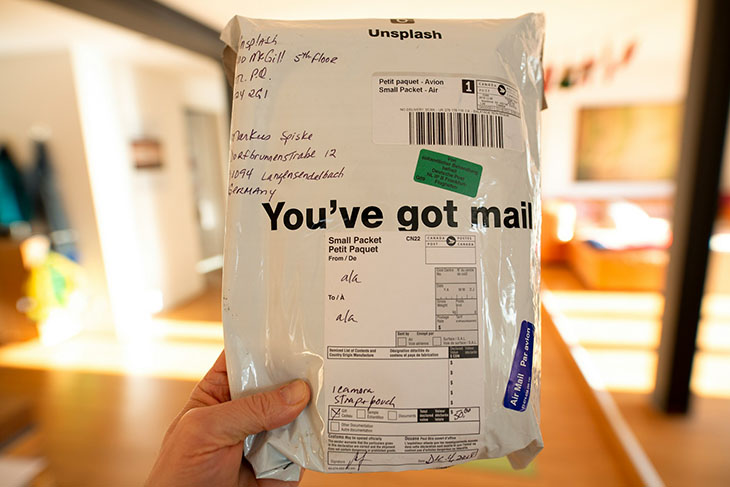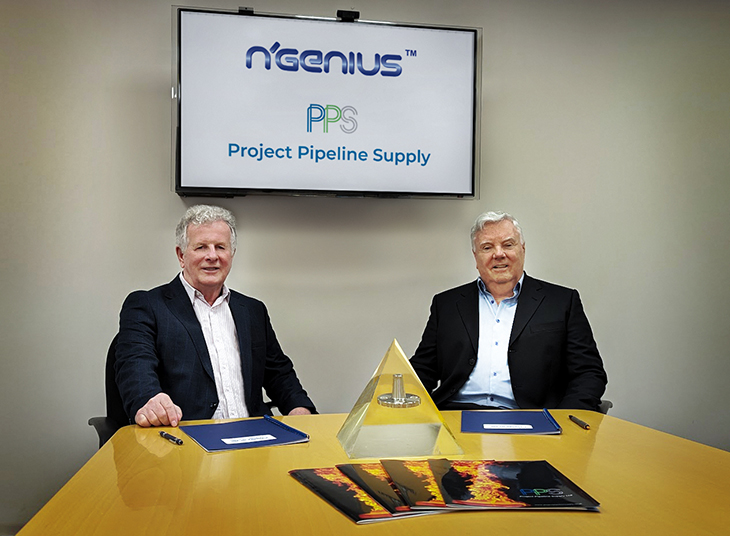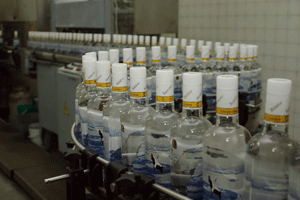A mobile elevated work platform (MEWP) enables facilities managers to tackle aboveground work, ranging from tree management to window washing. One of the main questions on their minds is whether it’s more cost-effective to buy or rent these machines. In any case, the costs span beyond the rental fees or purchase price. Facilities managers may need to hire a MEWP operator or invest in MEWP training for numerous employees using the equipment.
However, evaluating various cost and situation-related factors will help decision-makers reach confident conclusions that allow staying within a budget and getting jobs done safely.
Frequency of Use
The first point to consider is how often the facilities manager will need to use a MEWP in a year or another easily measurable period. Many professionals use this equipment to fill short-term needs. MEWPs make it easier to hang holiday decorations or set up outdoor stages for fundraisers. They’re also used to trim tall trees, maintain street lights or inspect roofs.
Buying makes the most sense if a professional can justify using the equipment during most months of the year. The same is true if it’s needed for a construction project anticipated to last years due to its intricacy.
Reaching medium- to long-term rental agreements is not always possible, and the feasibility of this option depends on how in-demand MEWPs are in an area. Plus, the costs could quickly pile up if a facilities manager must sign multiple rental contracts or renew the initial one.
Type of MEWP Required
The American National Standards Institute (ANSI) is a private nonprofit organization that sets design and usage standards for numerous products, including MEWPs. In 2020, ANSI made several important changes. The first relates to terminology. MEWPs were formerly called aerial lift platforms. Additionally, ANSI categorized each aerial lift by type.
Things are different now because people can classify MEWPs by group or type. The main group determination is the platform’s location from the tipping line — or the boundaries created by the equipment’s outriggers or wheels.
Groups
Group A: MEWPs with vertical-moving platforms that always stay within the equipment’s tipping line
Group B: All other MEWPs not covered by Group A
Type-Based Categorization
Type-based classifications concern a MEWP’s horizontal movement.
Type 1: People cannot move the equipment until they stow the platform
Type 2: Movement comes from the chassis and can occur with a raised platform
Type 3: Movement originates in the work platform and can happen with the platform elevated
Understanding what different MEWPs can do helps people select the most appropriate types for their facilities management needs.
Understanding MEWP Listings
Individuals will see groups and types listed as they review MEWPs for sale or rent. For example, the equipment could fulfill the characteristics of Group A and Type 2 or Group B and Type 1. Vendors typically list the type, followed by the group. For example, an electric scissor lift is a 3A MEWP. However, people interested in a boom lift with outriggers need equipment categorized as 1B.
People should begin focusing on availability after familiarizing themselves with groups and types. Does a local rental provider have numerous MEWPs available throughout the year? What are the options for purchasing one out of the area and transporting it to the desired location? Relatedly, people must undergo specific transport-related MEWP training before moving one.
Someone may initially think they’ll save more money by renting. However, that’s not necessarily the case if companies in their area don’t regularly have the MEWPs a customer needs. Then, the renter may waste too much time obtaining the equipment.
Budget and Available Capital
MEWPs come with significant upfront costs that potential purchasers must know and weigh. A good budgetary starting point is to calculate the cost per operational hour. Then, people should figure out the average time needed to complete a task with the equipment.
Adding supplementary costs — such as hiring a MEWP operator or training equipment users — is also necessary to estimate the projected costs accurately.
From there, people have several options for obtaining their MEWPs. Purchasing them doesn’t necessarily mean they need all the money right away. An indoor scissor lift typically costs at least $24,000, and potential purchasers may not immediately have that amount. Many vendors allow payment plans to spread the equipment costs over time.
Similarly, lease-to-buy arrangements enable people to own their MEWPs at the end of the term. Individuals desiring shorter-term agreements will often find vendors willing to rent the equipment by the hour, day, week or month.
Numerous other variables also affect costs, and many are vendor-dependent. For example, some allow rental customers to include maintenance needs in the sale. The agreement may also specify that if the MEWP breaks down, the rental company will bring a same-day replacement to a facility manager’s desired location.
People can add various features to purchases and rentals, from backup cameras to collision-prevention alarms. Those add-ons increase overall costs. However, facilities managers strongly considering renting can take advantage of the newest features at a comparatively lower price than a purchase.
Power Source
Diesel is a common power source for MEWPs, but fuel adds additional costs. Some facilities managers are opting for electric options. These require no additional MEWP operator training, and they’re eco-friendly. Some models are hybrid and run on an electric battery or fuel.
One recently developed electric model has a 1,000-mile range and additional capacity from hydrogen compatibility. The power source matters less for short-term rentals. However, facilities managers who plan to purchase the equipment or use a rental for months should focus on fuel costs to get the desired money-saving potential.
Maintenance, Inspections and the Need for MEWP Training
Renting typically allows people to save money on MEWP maintenance costs. Most rental companies offer packages with those expenses included. Relatedly, the parties providing this equipment for hire ensure it meets minimum standards before making it available to the next customer.
However, people can expand MEWPs’ service lives by taking basic steps to keep dirt and other foreign objects from entering critical areas. Some models have covers to make that easier. Additionally, keeping a hydraulic system’s fluids clean is vital.
ANSI provides suggested frequencies for inspections based on certain conditions. For example, a MEWP that has been out of service for over three months must be checked before the next use. Also, there can be no more than 13 months between the equipment’s annual inspections.
Technicians need MEWP training to inspect specific makes and models. Such education only covers particular types or options with similar designs. Another stipulation is that companies manufacturing MEWPs provide details for what to check in each inspection. That makes things less straightforward for facilities managers who own or rent several types.
Keeping a MEWP Operator Safe
Facilities managers deciding whether renting or buying will save them the most money overall must avoid cutting costs in ways that sacrifice safety. A MEWP operator faces risks related to working at heights, getting caught between moving parts or colliding with objects while using the equipment.
Although a prospective renter does not need to prove they have a qualified MEWP operator before obtaining the equipment, using it without one violates labor regulations in the United States and elsewhere.
MEWP training for a new operator covers things such as:
- Recognizing and minimizing hazards
- Using fall-prevention equipment
- Checking all vehicle and lift components
- Inspecting the work zone
- Maintaining stability while using MEWPs
Facilities managers calculating costs must include all safety-related needs. Those could extend to the products that keep a MEWP operator safe during use or courses to teach people best practices for safe operation.
Another critical point is that people who receive MEWP training get time-limited certifications. In the United States, each one remains valid for three years. However, the time frame varies in other countries.
The main cost-related factor for a facilities manager to consider is whether hiring someone who has already received the necessary MEWP training and certification makes sense financially. Otherwise, they can focus on training people who already work for them.
More Than the Upfront Costs
People interested in renting or buying MEWPs must remember that the initial costs to obtain the equipment are only part of the expenses. Failing to account for necessities such as maintenance and training can cause people to quickly go over budget.
However, professionals in facilities management roles have the best chances of making informed decisions by weighing these factors. Thinking about short- and long-term plans will also help them decide on their next steps.
A company’s financial decision-maker may be more likely to agree to purchase MEWPs if the justification for their ongoing use is evident. However, if rental equipment is widely available at affordable prices, people may choose to rent first to determine if they’ll use the equipment as much as expected.
Understanding whether it’s best to rent or buy requires someone to know aspects specific to their workplaces. Alternatively, facilities managers overseeing many sites while fulfilling their roles must calculate the anticipated use at all those locations. Such evaluations take a while to do thoroughly, but the results will help them feel more confident about their choices.


























